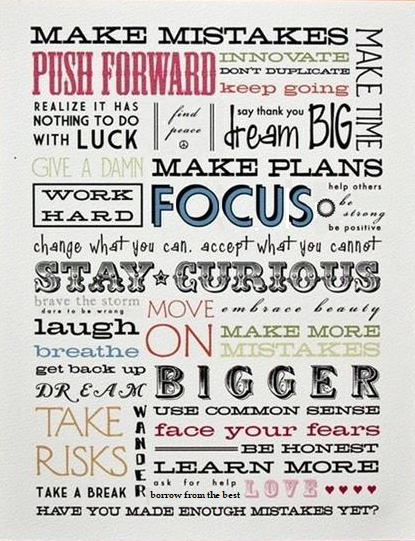
| you are here: home navigate to: * .well-known * |

It's not all pretty, what is happening to this beautiful world of ours. Do you know a BiggestWaster that might be tarnishing our world?
A BiggestWaster can erode, blunt, wear down, squeeze, weaken, deplete, rob, reduce, lessen, attenuate, undermine, subvert, exhaust, drain, debilitate, impair, disable, bleed, cripple, wreck, ruin, and destroy everything we care about.
It's time to call out any BiggestWaster that saps our birthright and our hard-earned resources, and treats us like saps. Calling out a BiggestWaster feels right, real and relevant. Our collective frustration might possibly go viral. But ultimately after we acknowledge the negatives, we must get past what drags us down and affirm the positive, reaching out toward the goals we want to accomplish. Feelings and actions that can enable our positive energy are powerfully portrayed in the second poster.

The delicate balance between negative and positive is captured in Johnny Mercer's lyrics in 1944 for the top-rated song "Accentuate the Positive". Implicitly and explicitly, BiggestWaster.com calls out BiggestWasters that tarnish the beauty of the world. But ultimately our task is to discover and affirm positive opportunities that will help us truly enjoy all that the world can offer us.
About BiggestWaster
The personal stories and observations here are culled from a many-decades-long journey of observation, investigation, trial-and-error, and listening to others. In compiling this website, the gathered insights and revelations have felt remarkably, if modestly, life-changing and worth passing on.
The reporting here is in no small measure inspired by all those publishing across the Internet and other media, from all sorts of communities, who are discovering and calling out dysfunction in food, housing, jobs, health care, finance, insurance, public services, transportation, and any area where waste reduces the quality of our lives and adds unnecessary risks and costs. Brave individuals and groups willingly and expertly articulate and share what they are experiencing, thinking about and doing. They offer suggestions that inspire us to think, discuss, and find opportunities to act.
If we re-examine and reflect on the status quo, might we find that our resources are being unfairly sapped, with no gain for us? Or that we have not shared in some readily available (and sustainable) gifts from our beautiful world? BiggestWaster.com is about change, and presents challenges to particular routines and conventional thinking that might seem immutable but are ripe targets for improvement.
Faster, Cheaper, Better. The old maxim says we can't simultaneously get all three. BiggestWaster.com is committed to the proposition that two out of three ain't bad, and miracles do happen.
DISCLAIMER: The content of this website is not guaranteed to be complete, true or correct, and is not intended as advice. So if you might decide to use some of what is shared here, it is at your own risk. BiggestWaster.com descriptions, explicit or implied, are generic, such as habits or attitudes we can afford to lose or change. No personal offense is intended.
Food for Fun and Purpose
Food Pantries
I am disheartened but also grateful that there are numerous food pantries and also food kitchens in my city of 30,000 residents.
What if pantry donors, facilitators, and a food-insecure family could save time and effort for all, and connect through the local supermarket? Within the supermarket building, could there be space provided and opportunity for volunteers to set aside and bag the family's requested donated items, to be picked up on the family's regular shopping trip, and/or a monetary donation authorized and included at check out time when the family presents their customer ID, coupons, SNAP card and payment?
Chocolate Milkshake
A favorite kitchen creation of mine is nearly 40 ounces of milkshake that I believe is moderately low-calorie, but is enough to satisfy (one or two people) without the "hangover" of the sugar and fat-loaded traditional version.
In my Ninja blender, I combine:
Blend for about thirty seconds to combine the ingredients.
Then add one tray of ice cubes to the blender (the Ninja is designed to crush cubes).
Blend for 6 minutes or so, making sure early on that all the ice cubes are being crushed. Run the blender until the fluid has aerated and gotten thicker, and its volume has risen closer to the top of the blender. FYI I need to prop a properly sized item between the Ninja and a cabinet above it for the six minutes to keep it running, since the Ninja has only a momentary-on switch.
Remove the blender container, pour out to serve, and enjoy before it melts.
This shake is loaded with air like any milkshake. Unexpectedly, using skim milk seems to make a better shake than whole milk. Besides generally satisfying hunger, the shake qualifies as a pre-fill before a meal, just like water, filling the stomach and somewhat reducing appetite for a later meal. The calorie count for nearly 40 ounces of milkshake is approximately 315 calories (35 for carob, 50 for skim milk, 80 for small banana, 150 for chocolate), compared to 32 to 37 calories/ounce for a traditional milkshake. Use half as much chocolate for even fewer calories.
Reminder: Use an ice-cube-friendly blender (like the Ninja). Before bananas get too ripe you might freeze them (peeled, wrapped in plastic wrap), and use these to make the shake.
Grilling Vegetables
Another of my favorite snacks or meals is gas-grilled sliced vegetables that are laid out on perforated grill pans that sit on the grill bars so the slices don't fall through. Try beets, turnips, sweet potatoes or yams, baking or other potatoes, red peppers, onions, eggplant, carrots. Everything tastes great, and will last for days in the refrigerator.
Wash, and peel if necessary. (Edible peels can be left on if that's your preference, since they grill and taste great.) Then on a cutting board cut the potatoes, beets, and turnips into relatively thin slices, cutting in a direction that makes the largest-possible diameter flat pieces (they'll still be manageable on a plate or as finger food). These thin, uniformly cut slices will cook quicker and more consistently, and you'll find that with large diameter pieces, there are fewer of them and they are easier to handle on the grill. I use a standard kitchen metal tongs for handling vegetables on the grill.
I use two or three metal bowls for the prep work. After slicing, submerge potato slices and beets in water while they wait for the grill, to keep them from oxidizing and to add some moisture content. When each sliced vegetable is ready for the grill, drain the water and use a large bowl to toss the slices by hand with a small amount of olive oil, to very lightly coat each slice.
Eggplant (whole), peppers (with stem and seed core removed) and onions (still in their paper covering) can be placed on the grill as is. After grilling I will scoop out the eggplant to make babaganoush, slice the roasted peppers for use as a garnish, and use the roasted onions in place of sauteed onions in soups, etc.
I turn on the grill and set the two outer burner rows on low flame (leaving the center row off), then immediately load up the grill with the whole eggplant, onions and red peppers which will be left on the grill for the usually two rounds of vegetable slices. On my chosen low flame setting I need to check the grill at least every 10-15 minutes to avoid burning the potato and beet slices. These slices are ready to flip when they are just browned on the underside. Rotate onions, eggplant and peppers occasionally also. After browning the vegetable slices on both sides, I stack them and also the red peppers in a less hot corner of the grill so that they bake through. When they become somewhat floppy and tender, you can remove them from the grill and serve, or let them cool and put them away in the fridge for later.
Play with the grill arrangement to find what works best for your grill. Setting a low flame that heats to 250-300 degrees F works best for me. I keep aware of the hottest spots and move slices around to evenly grill them. The yam slices particularly are quick-cooking and easily scorched, as are other potato, turnip and the beet slices. The slices only need direct exposure to the flame to brown on each side, then can be piled on top of each other or on top of other vegetables to just bake and finish cooking.
I use the few minutes when the current batch of vegetables is grilling to prepare the next batch, checking the clock to remember to go outside to check the grill every 10-15 minutes or so.
As for grilling animal protein, I'm partial to fish fillets, particularly salmon. With the flame set low and the grill reaching 250-300 degrees F, the fillets, lightly dressed in olive oil, sit on the grill skin-side down for 25 minutes or so untouched, with no extra effort save checking that it's cooked adequately. The filets seem to stay moist and tender even with slight overcooking. Grilling outside saves airing out the house when you're done.
FYI, here in the northeast, legend is that after a snowstorm, intrepid grillers first make sure to shovel a path to the grill.
Fair Housing
Is housing a luxury, a privilege, a right? Should it be so difficult a challenge to find affordable, reliable, safe housing?
See:
http://housingisahumanright.org/
for stories of the struggle for home
and
http://www.sandystoryline.com/
for stories of recovery after superstorm Sandy
and
http://www.storyline.media/
investigating societal challenges through artistic/journalistic/activist storytelling